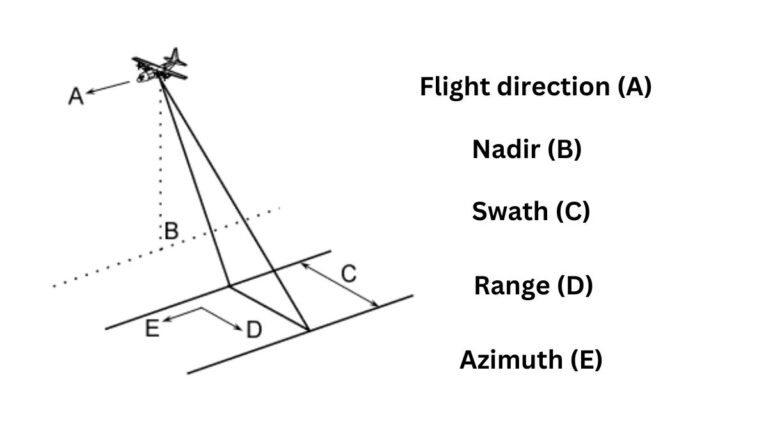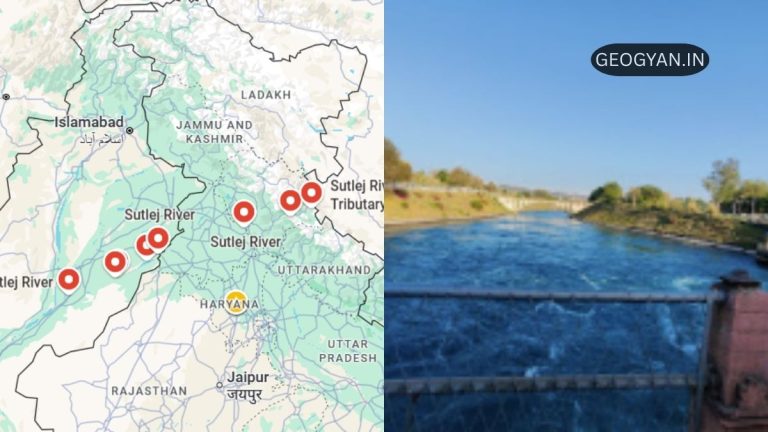Estimated reading time: 6 minutes
Table of contents
To analyze the climate of a region, it is important to have knowledge of the temperature, rainfall, air pressure, and the speed & direction of winds of that region. The country’s latitudinal expansion, relief, and distribution of water have a deep impact on these climatic elements. As we know, the Tropic of Cancer divides India into almost two equal parts. Therefore, its southern part is in the tropical zone and the northern part is in the temperate zone.
The gigantic Himalayan Mountains are situated on the northern border of India. It separates the Indian subcontinent from Central Asia and blocks the cold winds coming from there. Thus, tropical climate is found all over India. Monsoon winds coming from the Indian Ocean located in the south of India have the greatest influence on the country. Therefore, the climate of India is called a tropical monsoon climate.
The list of factors affecting the climate of India is as follows:
Location and latitudinal extent
India lies between 8° 4′ N to 37° 6′ N latitudes. The Tropic of Cancer passes through the middle of India. Being near the equator, the southern parts have high temperatures throughout the year. On the hand, the northern part is located in the warm temperate zone. Hence, there is a low temperature, especially in winter.
Distance from the sea
Peninsular India is surrounded by the Arabian Sea, the Indian Ocean, and the Bay of Bengal. So, the climate in the coastal regions is even. On the contrary, the regions which are located in the interior part of the country (away from the sea), don’t have influence of the sea. As a result, the climate of those regions is found to be heterogeneous or continental.
Northern mountain ranges
The Himalayas and their accompanying ranges, which extend from Kashmir in the northwest to Arunachal Pradesh in the northeast, separate India from the rest of Asia. These ranges protect India from the extremely cold and dry winds coming from Central Asia in winter and keep northwestern India warmer. These mountains also form an effective barrier in front of southwest monsoon winds so that they cannot cross the northern borders of India and hence these regions experience rainfall in summer. Thus, these ranges act as a climatic separator between the Indian subcontinent and Central Asia.
Topography
Topographical features in different parts of the country affect the temperature, atmospheric pressure, direction of winds, and amount of rainfall. The Himalayan Mountains in the north block the moist monsoon winds that cause rainfall across northern India. The funnel-shaped shape of the hills in the Meghalaya Plateau receives the world’s highest rainfall from the monsoon winds.
The Aravalli range is parallel to the direction of the monsoon winds. Hence, it fails to stop the monsoon winds and thus almost the whole of Rajasthan is a vast desert. The Western Ghats act as a wall in the path of the southwest monsoon winds, due to which the western slope of this mountain range and the western coastal plain receive heavy rainfall. On the other hand, the eastern slope of these mountains receives very less rainfall as the wind descends and becomes hot and dry. Therefore, this region is called the ‘rain shadow’ region.
Monsoon winds
South-west summer winds that come from the sea cause rainfall throughout the country. On the contrary, the northeast monsoon winds in winter blow from land to sea and are unable to rain. These winds receive some moisture from the Bay of Bengal and bring light rainfall to the Tamil Nadu coast.
Upper-Air Circulation
Another reason for the sudden burst of monsoon in India is the change in the upper air circulation over the Indian landmass. The jet stream flowing in the upper air system affects the Indian climate in the following ways.
(a) Western jet stream
In winter, at a height of about 8 km above sea level, the western jet stream moves at a fast speed over the temperate zone. This stream is divided into two parts by the ranges of the Himalayas. The northern branch of this jet stream runs along the northern edge of the Himalayas. The southern branch runs eastwards over 25°N latitude to the south of the Himalayan ranges. Meteorologists believe that this branch plays an important role in influencing the winter weather conditions of India.
This jet stream is responsible for moving Western Disturbances from the Mediterranean regions to the Indian subcontinent. Winter rains and hailstorms in the northwestern plains and occasional heavy snowfall in the hilly regions are the result of these disturbances. Due to their influence, cold waves prevail in the entire northern plains.
(b) Eastern jet stream
In summer, the upper air circulation changes, and the westerly jet stream is replaced by the eastern jet stream, which originates from the heating of the Tibetan Plateau. This jet stream develops over peninsular India around 15°N latitude that helps in the sudden arrival of the Southwest Monsoon winds in India.
Western Disturbances and Tropical Cyclones
Western Disturbances come from the Mediterranean region with the westerly jet stream propagating in the Indian subcontinent. It affects the winter weather conditions in the northern plains of the country as well as the western Himalayan region.
Tropical cyclones originate in the Bay of Bengal. The intensity and direction of these cyclones affect most parts of India during the southwest monsoon season and also affect the eastern coastal weather conditions in the retreating monsoon season i.e., from October and November. Some tropical cyclones also originate in the Arabian Sea and affect the western coastal region of India.
El-Nino Effect
Weather conditions in India are also affected by El-Nino, which is responsible for widespread floods and droughts in tropical regions of the world. El-Nino is a narrow warm ocean current that sometimes appears in the month of December off the Peruvian coast of South America. Sometimes it starts flowing as a temporary warm current in place of Peru’s cold current. When it becomes more intense, it increases the temperature of the upper seawater by 10 °C.
The warming of the tropical Pacific Ocean waters affects the global pressure and wind systems as well as the monsoon winds in the Indian Ocean. It is believed that the severe drought in India in 1987 was the result of El Nino.
Southern Oscillation
Southern Oscillation is a pattern of change in air pressure between the Indian and the Pacific oceans. It has been seen that when the air pressure is high in the Indian Ocean then it is low in the Pacific Ocean or the condition of air pressure on these two oceans is opposite to each other. When the winter air pressure is high over the Pacific Ocean region and low over the Indian Ocean, then the southwest monsoon is more powerful in India. On the contrary, there is a high possibility of weakening of the monsoon.
You May Also Like





























